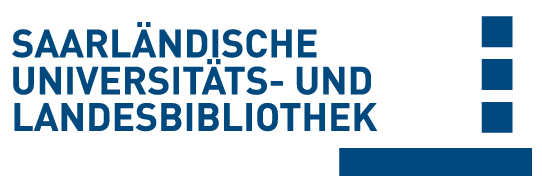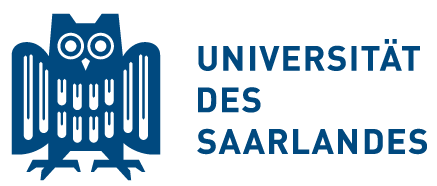Bitte benutzen Sie diese Referenz, um auf diese Ressource zu verweisen:
doi:10.22028/D291-44273 | Titel: | Targeted Therapy in Salivary Gland Cancer: Prevalence of a Selected Panel of Actionable Molecular Alterations in a German Tertiary Referral Center Patient Cohort |
| VerfasserIn: | Linxweiler, Maximilian Wemmert, Silke Braun, Felix Leon Körner, Sandrina Brust, Lukas Alexander Knebel, Moritz Klamminger, Gilbert Georg Wagner, Mathias Morris, Luc G. T. Kühn, Jan Philipp |
| Sprache: | Englisch |
| Titel: | Molecular Diagnosis & Therapy |
| Bandnummer: | 29 (2025) |
| Heft: | 1 |
| Seiten: | 103-115 |
| Verlag/Plattform: | Springer Nature |
| Erscheinungsjahr: | 2024 |
| DDC-Sachgruppe: | 610 Medizin, Gesundheit |
| Dokumenttyp: | Journalartikel / Zeitschriftenartikel |
| Abstract: | Objective Salivary gland carcinomas (SGC) are a heterogeneous group of malignancies, with 24 subtypes defned by the World Health Organization (WHO). The standard of therapy is surgical resection, with adjuvant radiotherapy in most cases. However, disease recurrence (R) or metastasis (M) is common and no active systemic therapies are currently available for RM-SGC resulting in a 5-year survival rate of only 20%. Patients and Methods Overall, 55 SGC patients with seven diferent histological tumor subtypes were included in this study. formalin-fxed parafn-embedded (FFPE) tissue samples were used for immunohistochemical (IHC) staining targeting HER2/ neu, androgen receptor (AR), PD-L1, EGFR, panTRK, and TROP2. Fluorescence in situ hybridization (FISH) was performed for detecting HER2/neu amplifcations and NTRK1/2/3 translocations in selected cases with relevant HER2/neu and panTRK protein expression, respectively. IHC and FISH results were correlated with patients’ clinical and histopathological data. Results The overall prevalence of druggable molecular alterations, defned as an immunoreactive score ≥ 9 in at least one of the analyzed targets, was 54.4% with the highest percentage in oncocytic carcinomas (100%) and lowest percentage in acinic cell carcinomas (10%). EGFR overexpression proved to be the most common alteration (32.7% of cases) followed by overexpression of TROP2 (27.3%), AR (10.9%), HER2/neu (7.3%), PD-L1 (1.8%), and panTRK (1.8%). HER2/neu amplifcations were found in 50% and NTRK translocations were found in 100% of all cases with elevated Her2/neu and panTRK protein expression, respectively. Conclusions Our data indicate that targeted therapy using e.g., trastuzumab deruxtecan, bicalutamide, pembrolizumab, cetuximab, entrectinib or sacituzumab govitecan might be a promising option especially for a relevant subset of patients with RM-SGC not suitable for salvage surgery. However, evidence from clinical studies regarding response rates to these therapies remains sparse, which underlines the need of multicenter clinical trials. |
| DOI der Erstveröffentlichung: | 10.1007/s40291-024-00750-w |
| URL der Erstveröffentlichung: | https://doi.org/10.1007/s40291-024-00750-w |
| Link zu diesem Datensatz: | urn:nbn:de:bsz:291--ds-442735 hdl:20.500.11880/39570 http://dx.doi.org/10.22028/D291-44273 |
| ISSN: | 1179-2000 1177-1062 |
| Datum des Eintrags: | 4-Feb-2025 |
| Bezeichnung des in Beziehung stehenden Objekts: | Supplementary Information |
| In Beziehung stehendes Objekt: | https://static-content.springer.com/esm/art%3A10.1007%2Fs40291-024-00750-w/MediaObjects/40291_2024_750_MOESM1_ESM.tiff https://static-content.springer.com/esm/art%3A10.1007%2Fs40291-024-00750-w/MediaObjects/40291_2024_750_MOESM2_ESM.xlsx |
| Fakultät: | M - Medizinische Fakultät |
| Fachrichtung: | M - Hals-Nasen-Ohrenheilkunde M - Pathologie |
| Professur: | M - Prof. Dr. Rainer M. Bohle M - Prof. Dr. Bernhard Schick |
| Sammlung: | SciDok - Der Wissenschaftsserver der Universität des Saarlandes |
Dateien zu diesem Datensatz:
| Datei | Beschreibung | Größe | Format | |
|---|---|---|---|---|
| s40291-024-00750-w.pdf | 1,36 MB | Adobe PDF | Öffnen/Anzeigen |
Diese Ressource wurde unter folgender Copyright-Bestimmung veröffentlicht: Lizenz von Creative Commons


